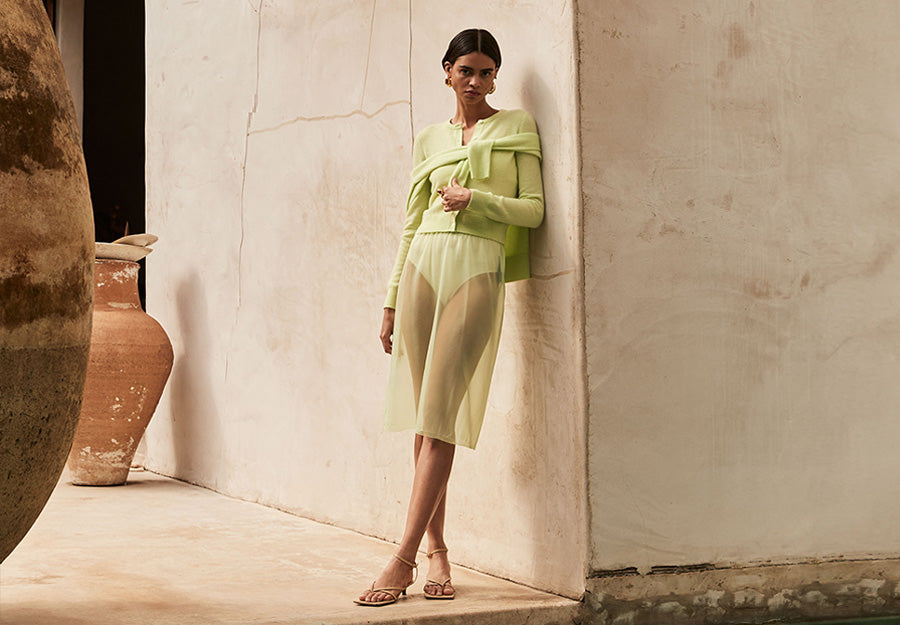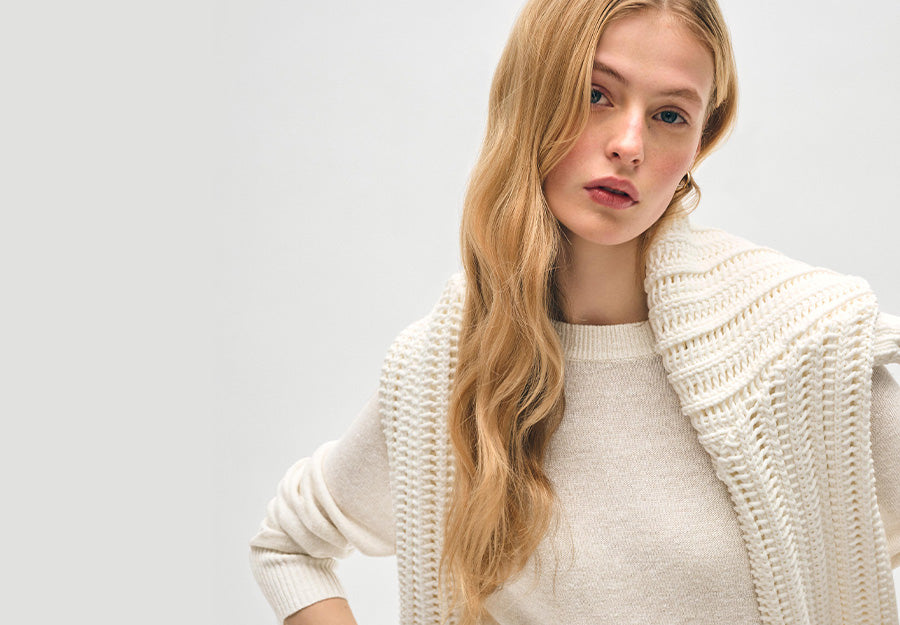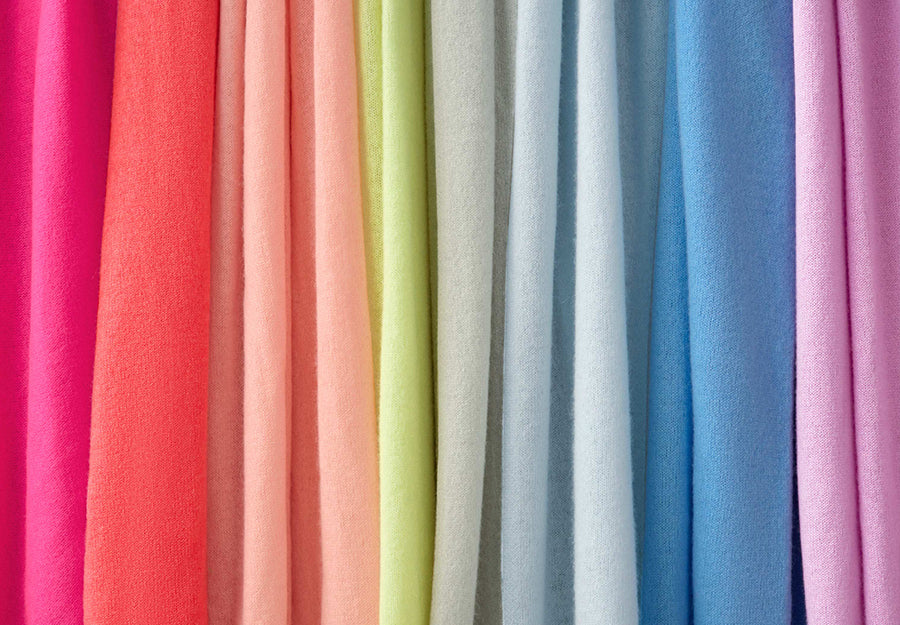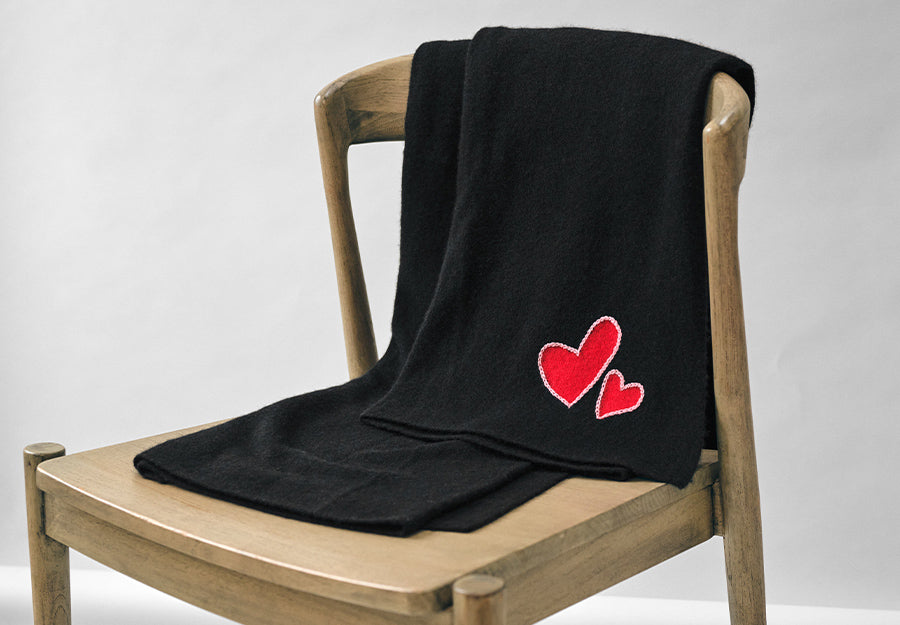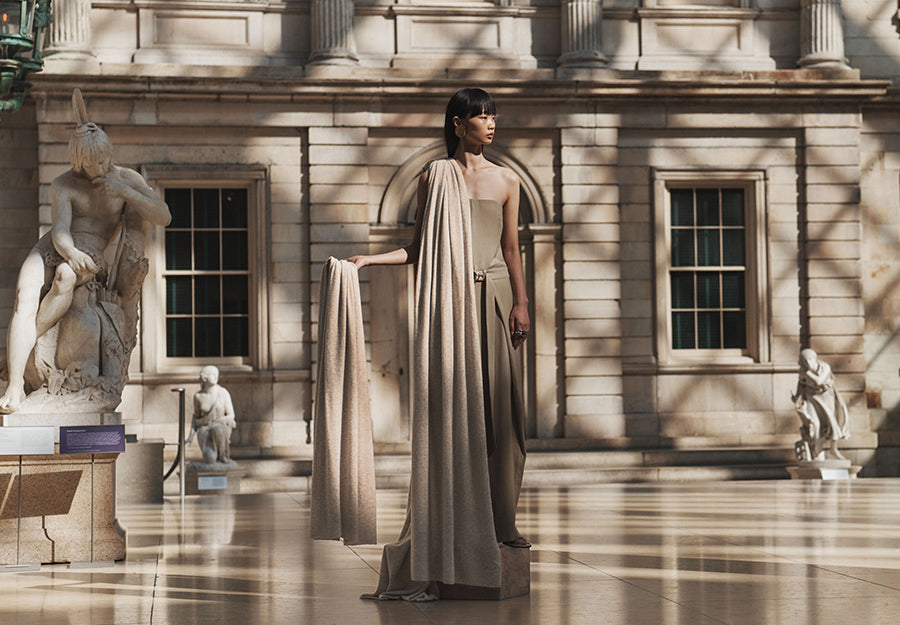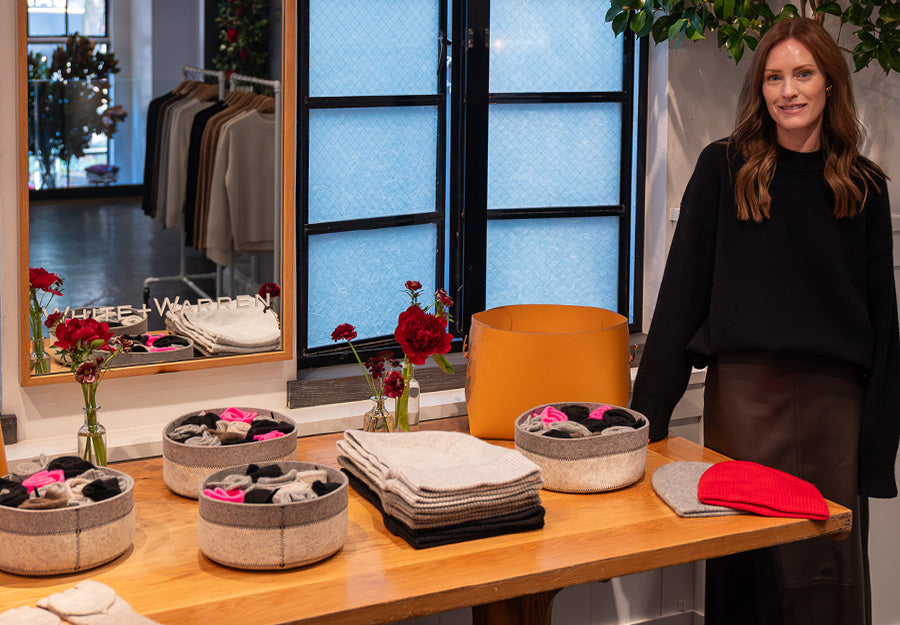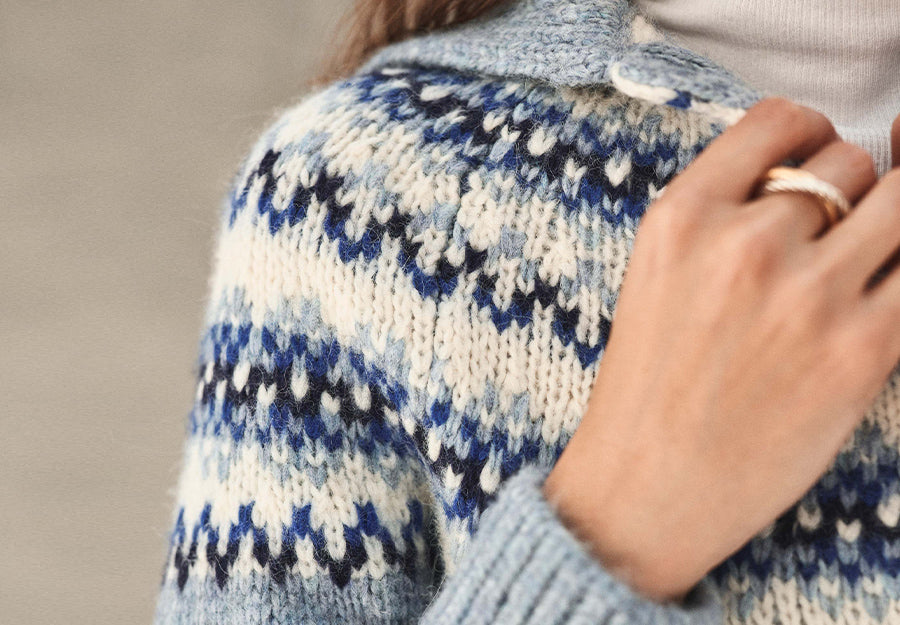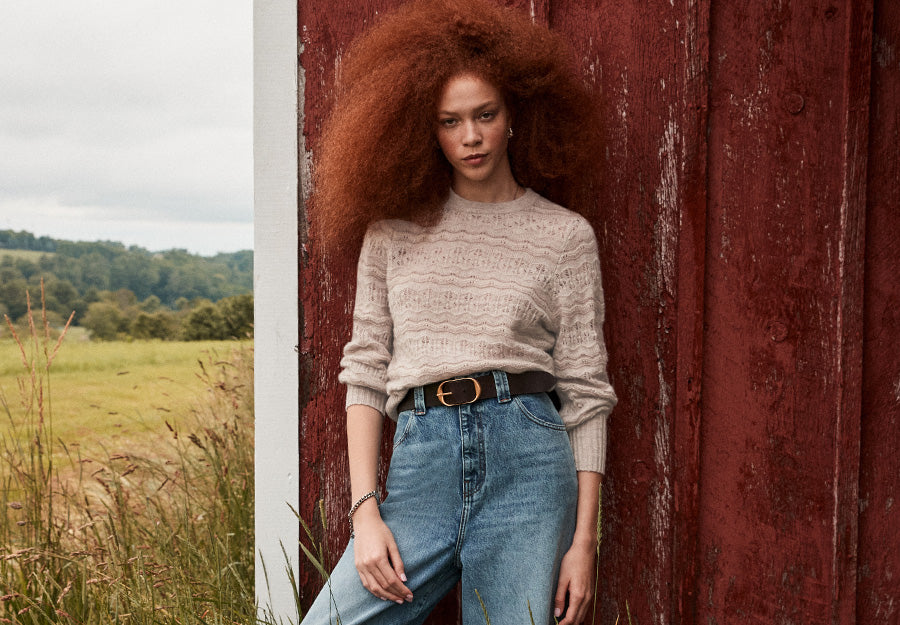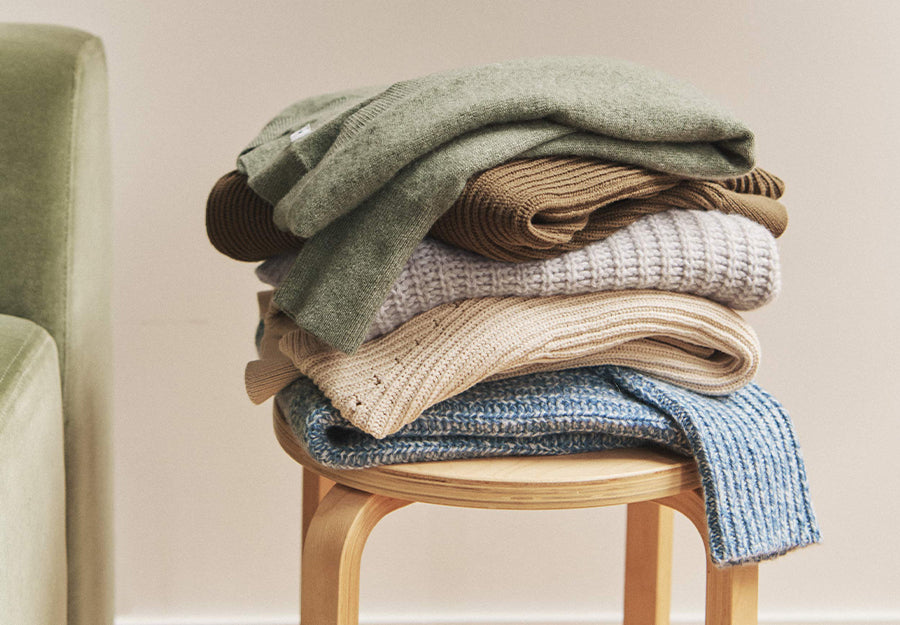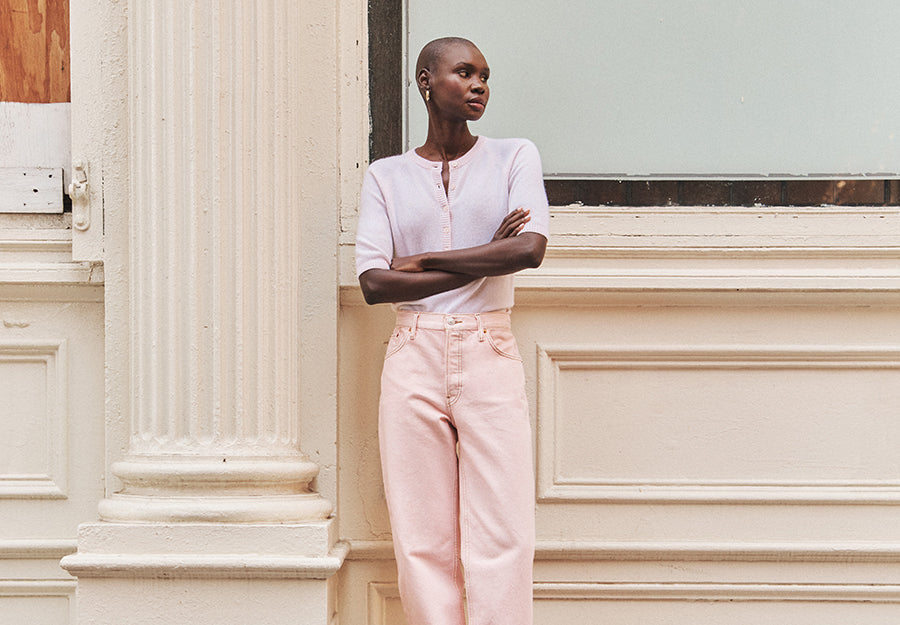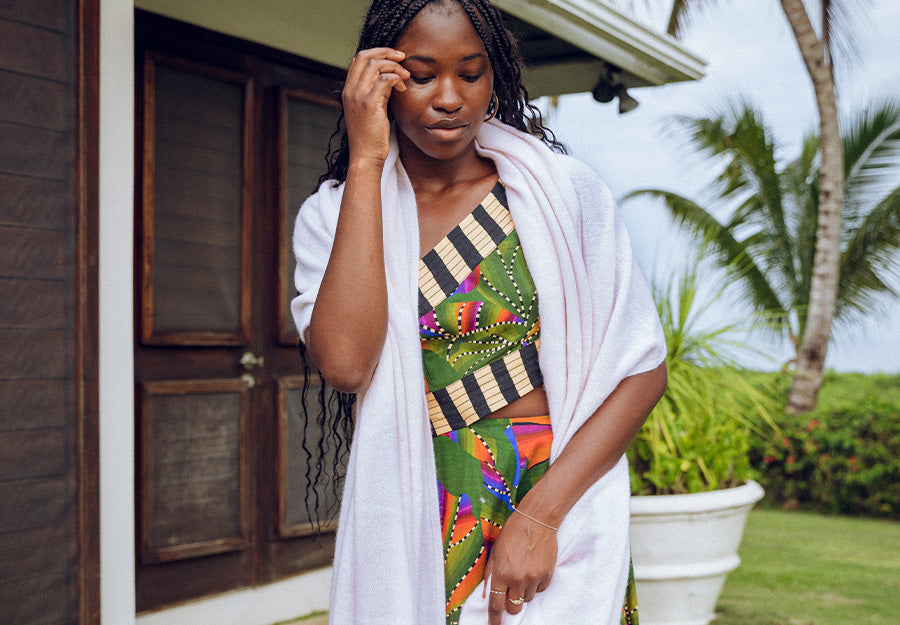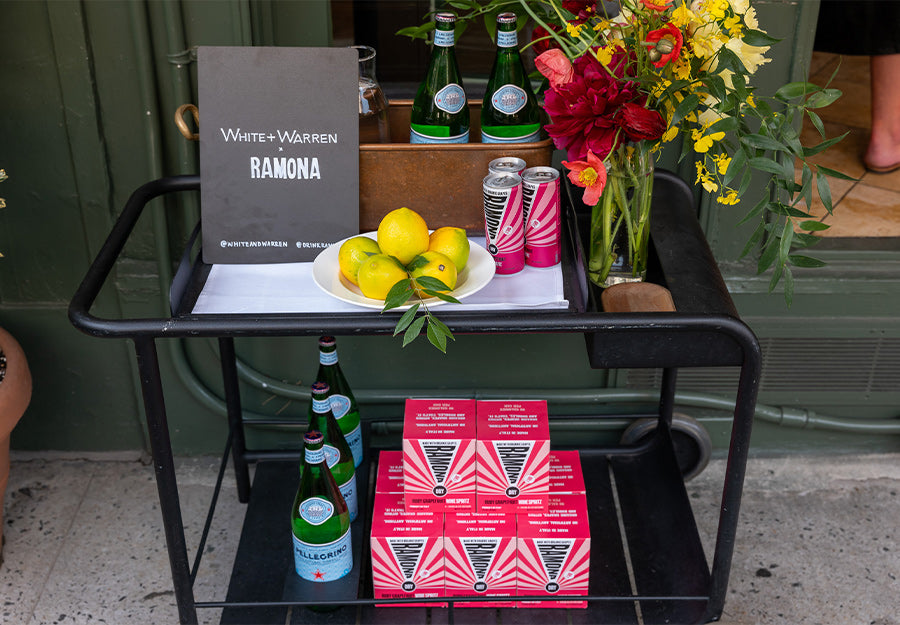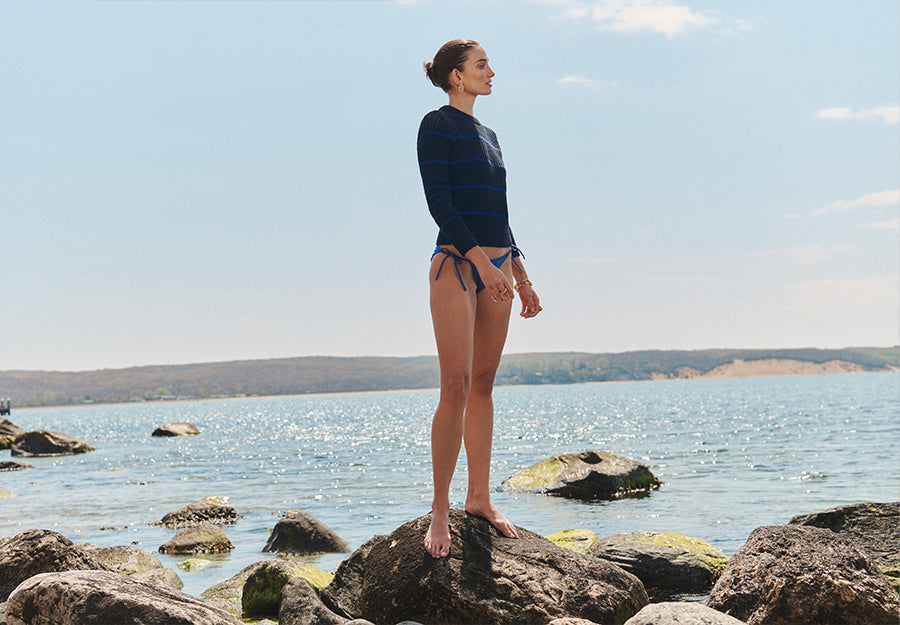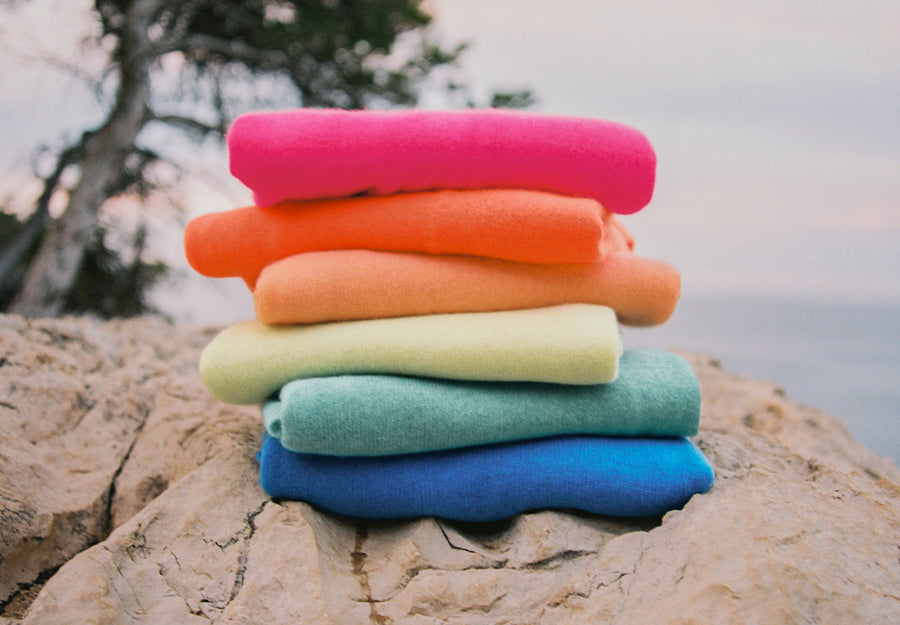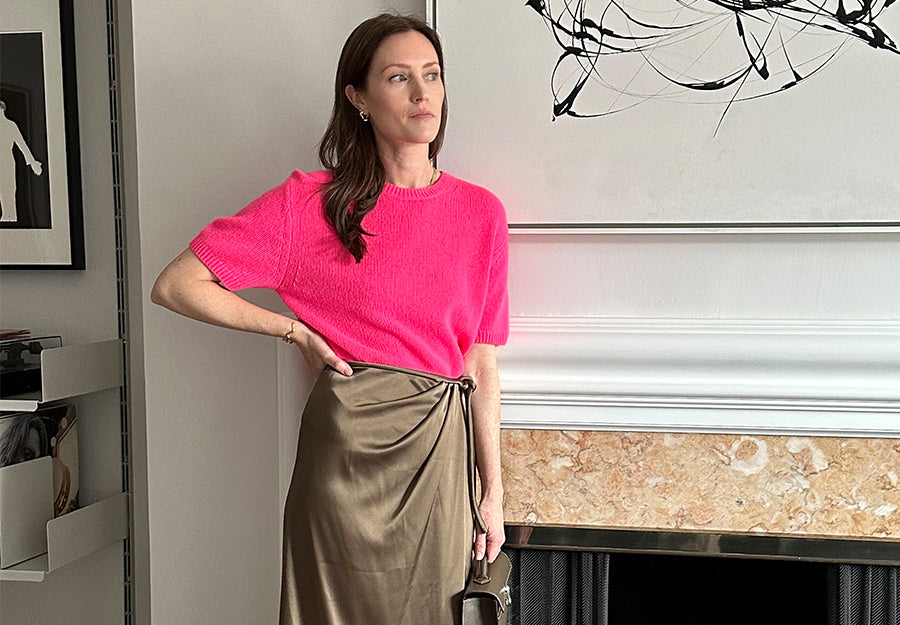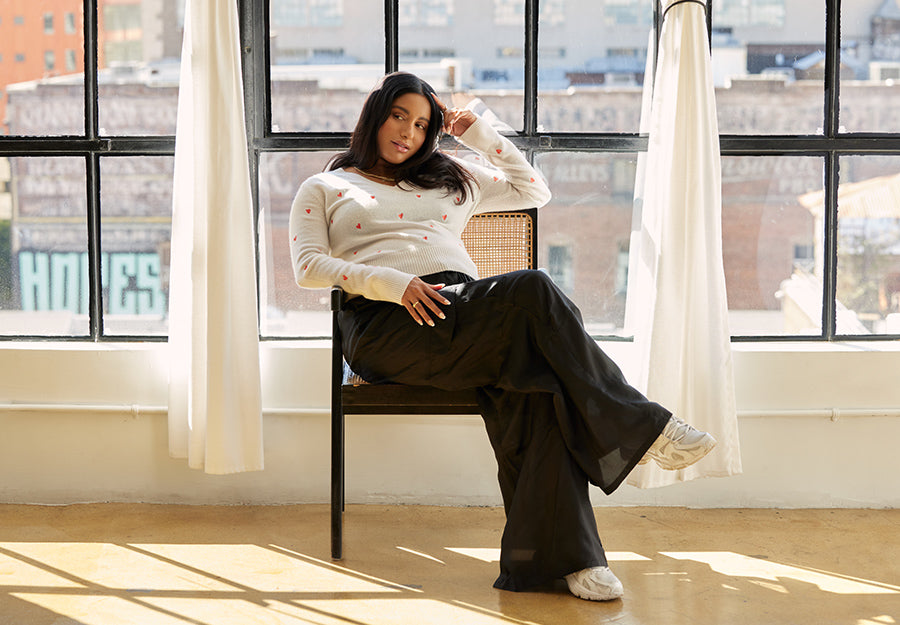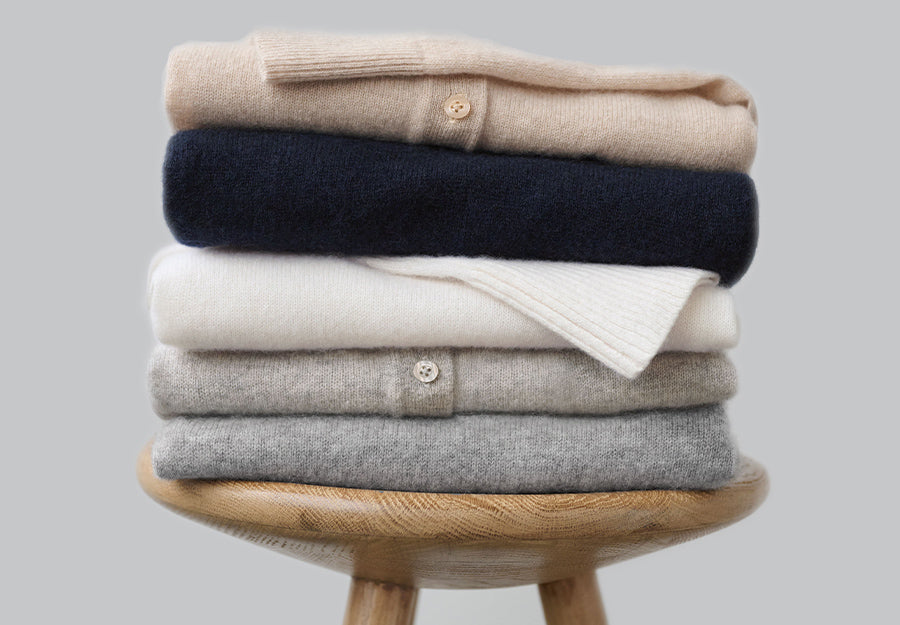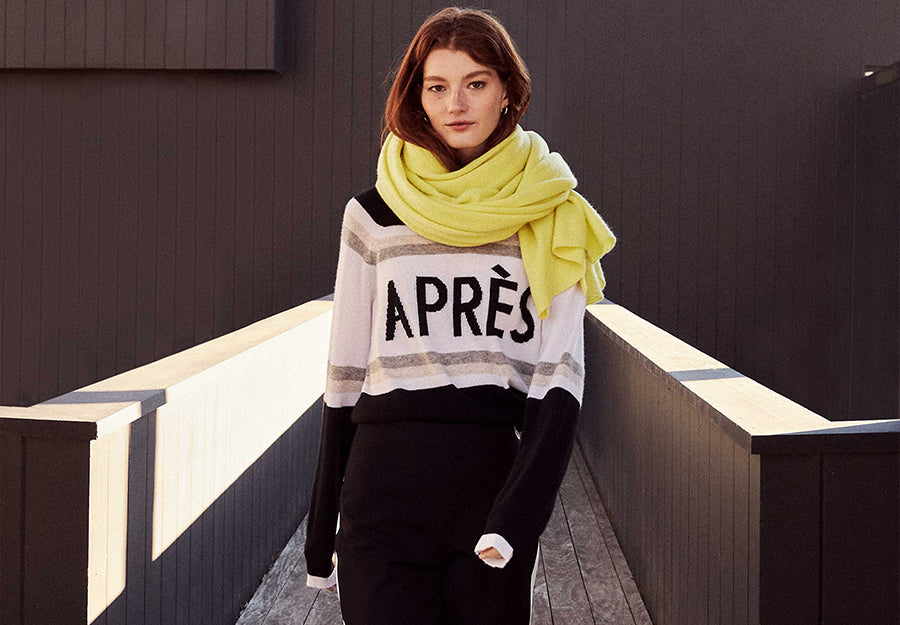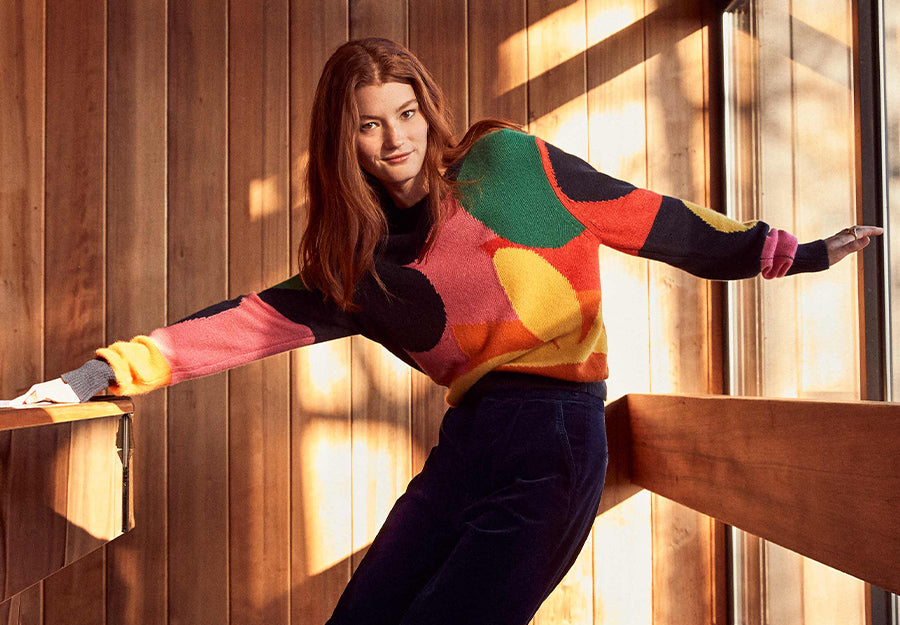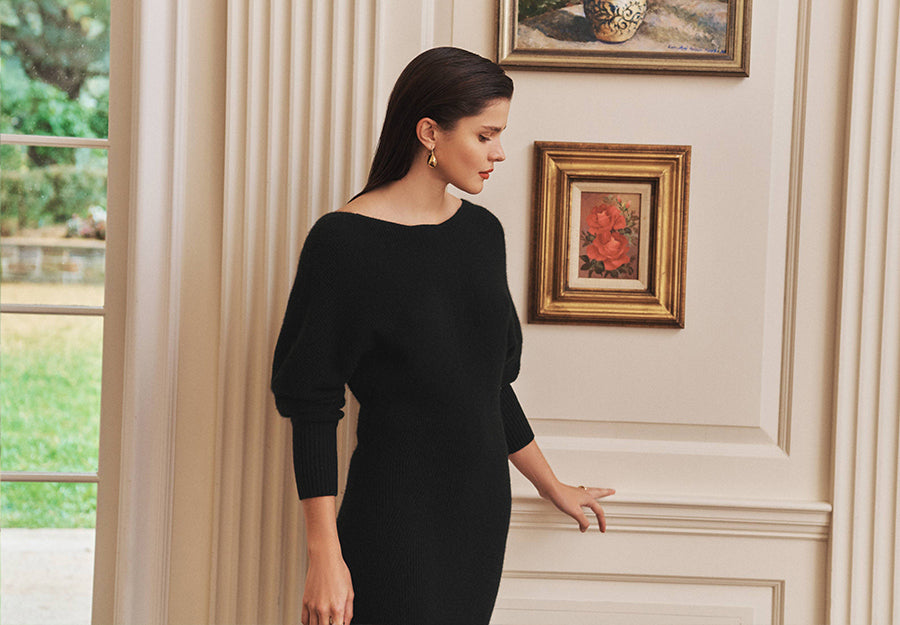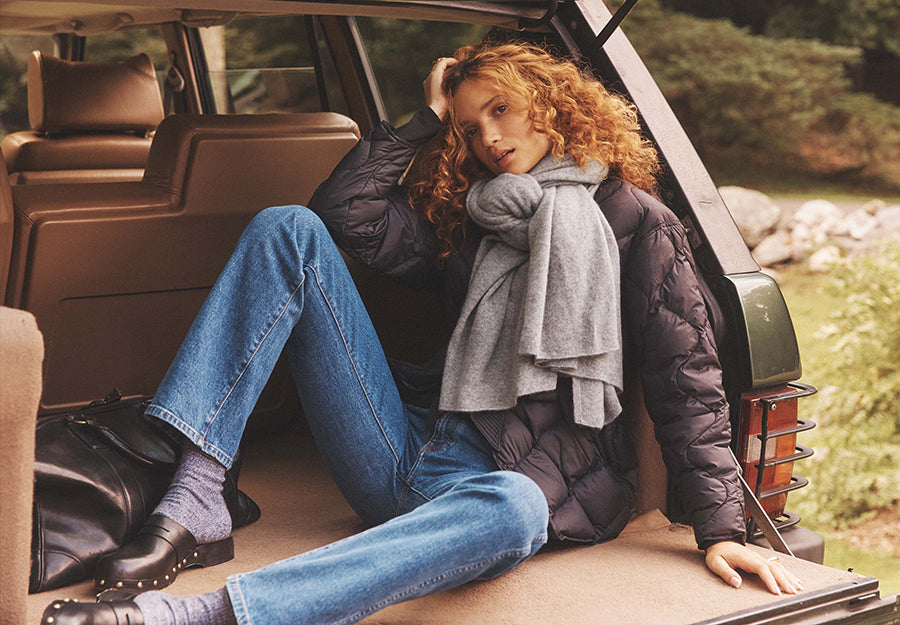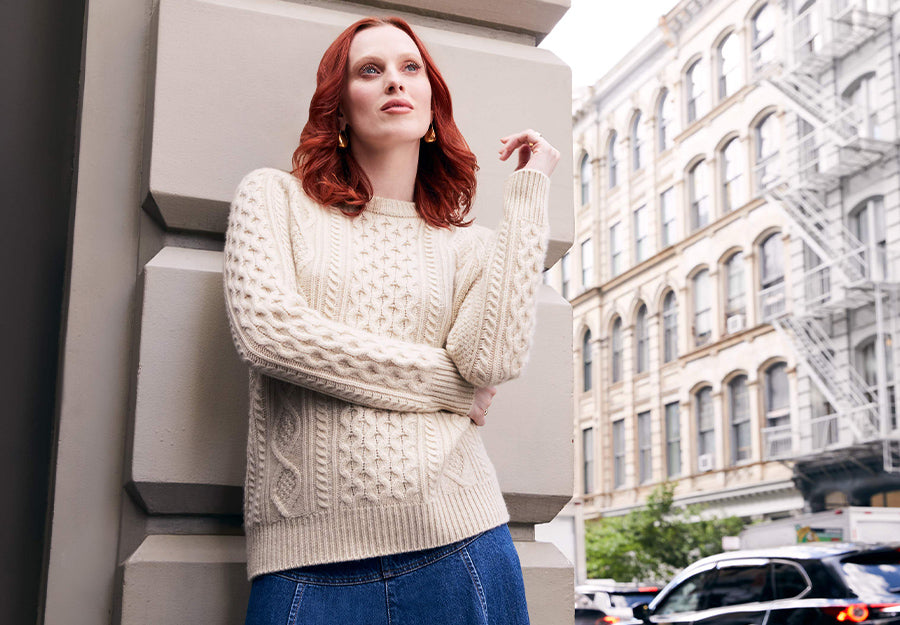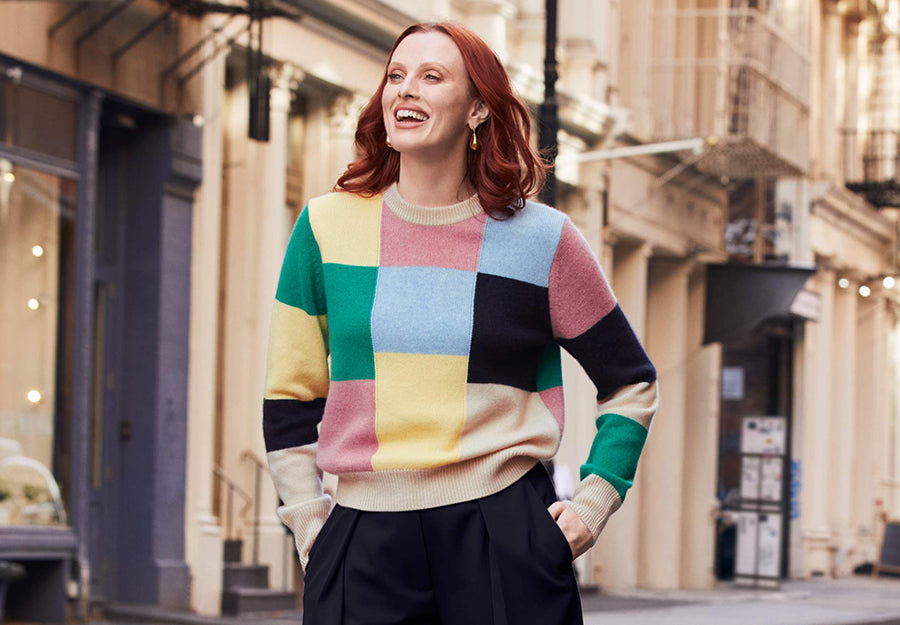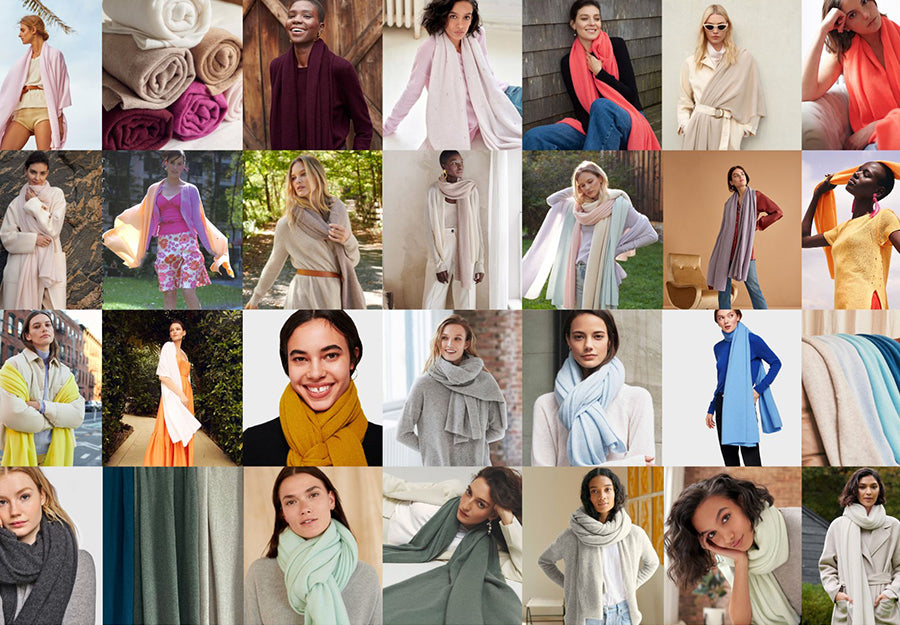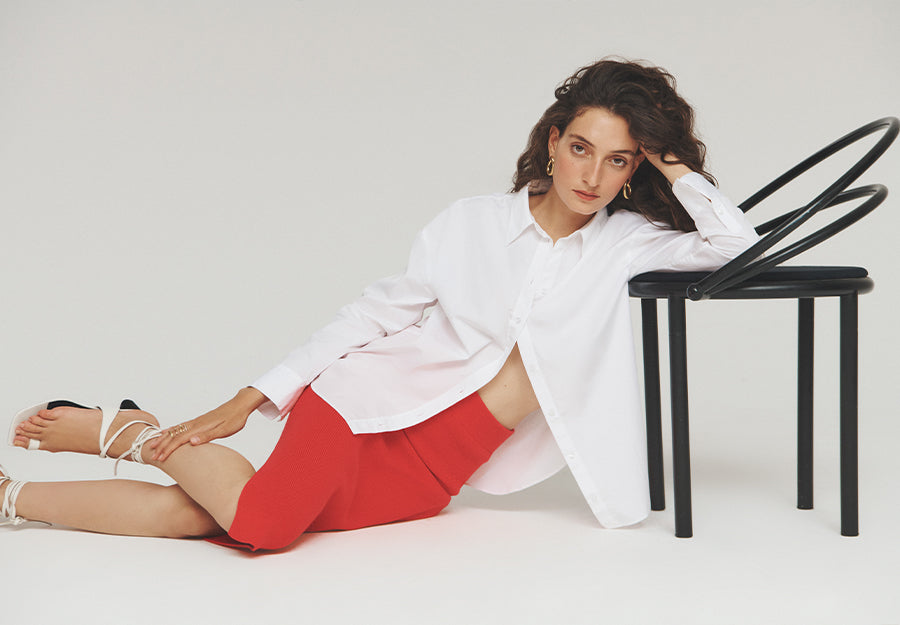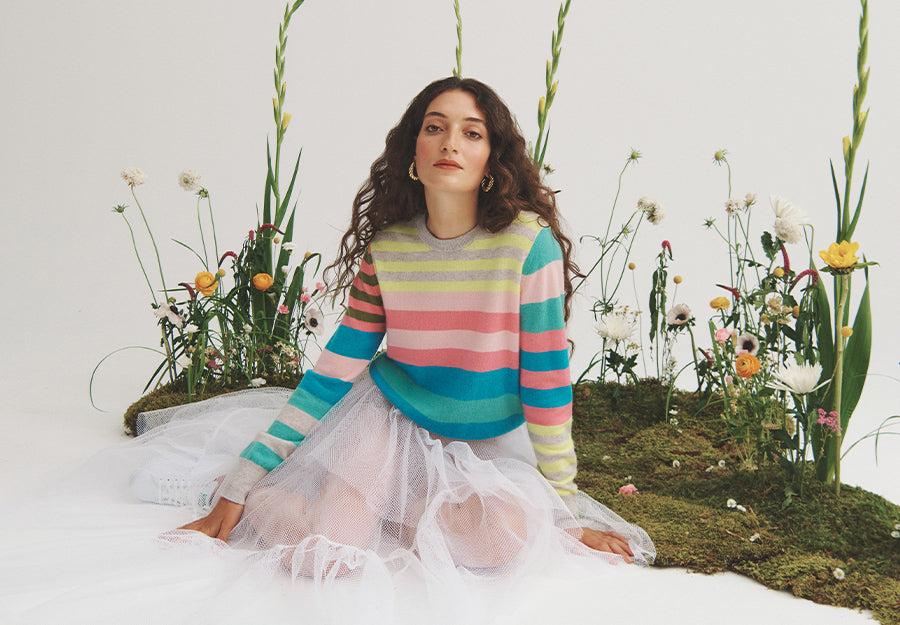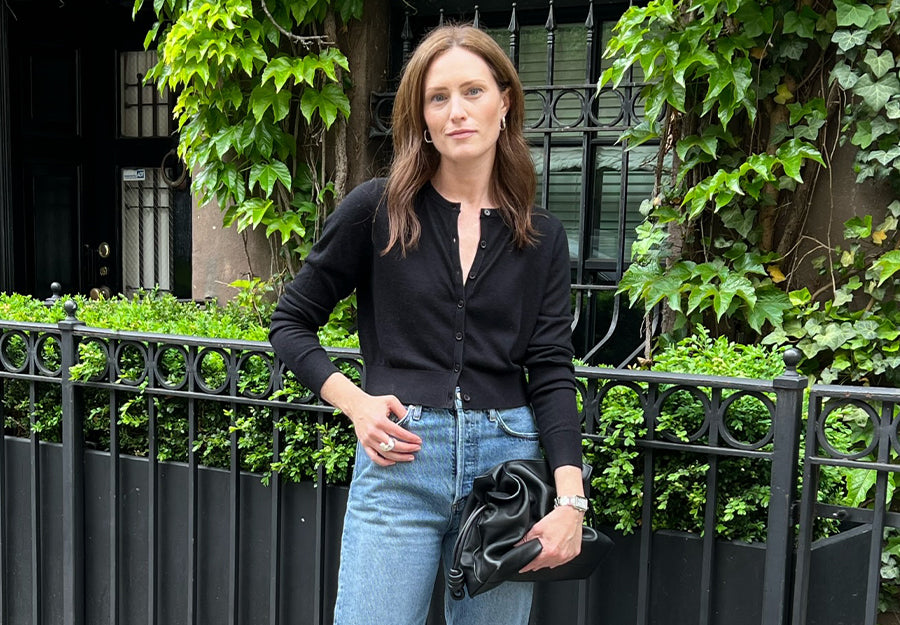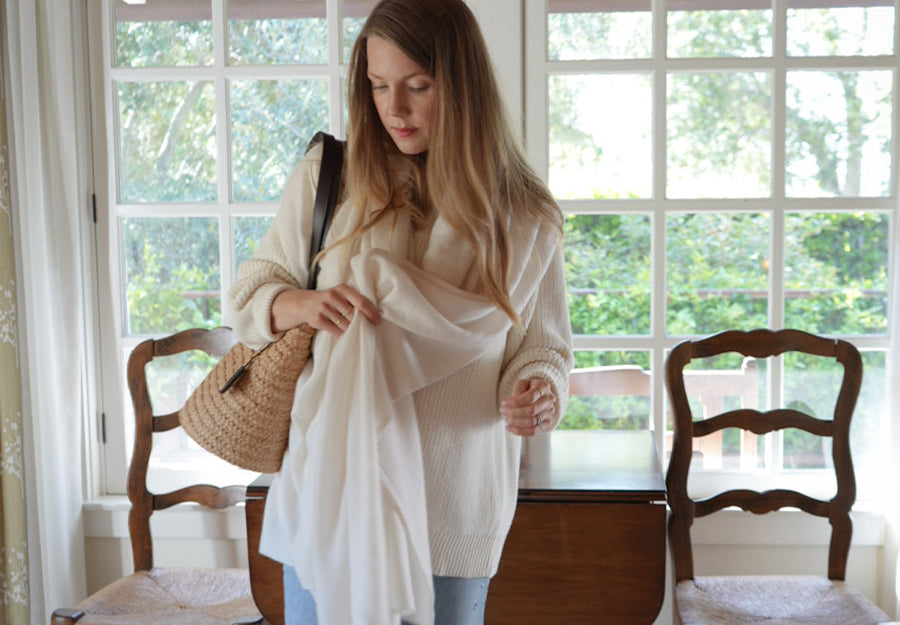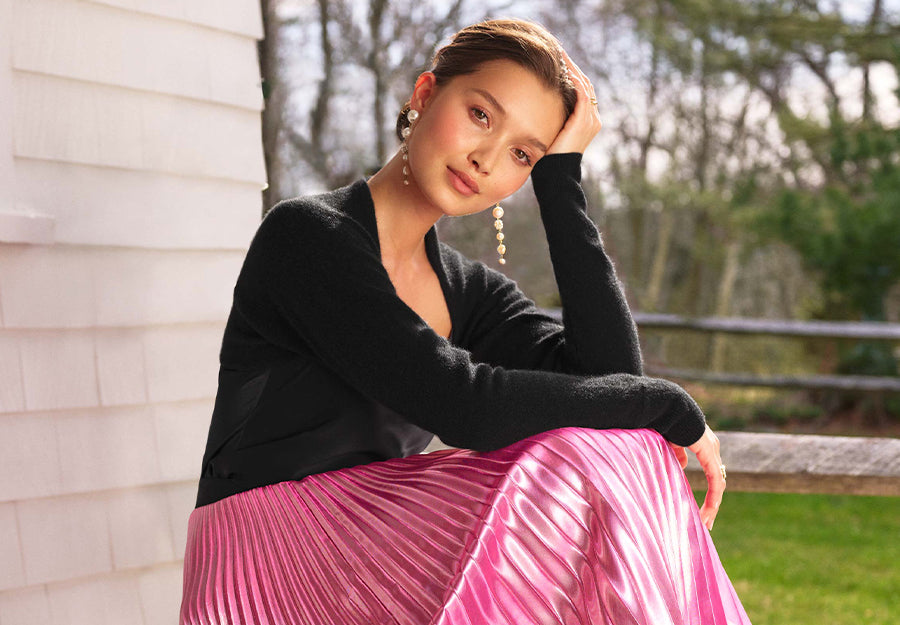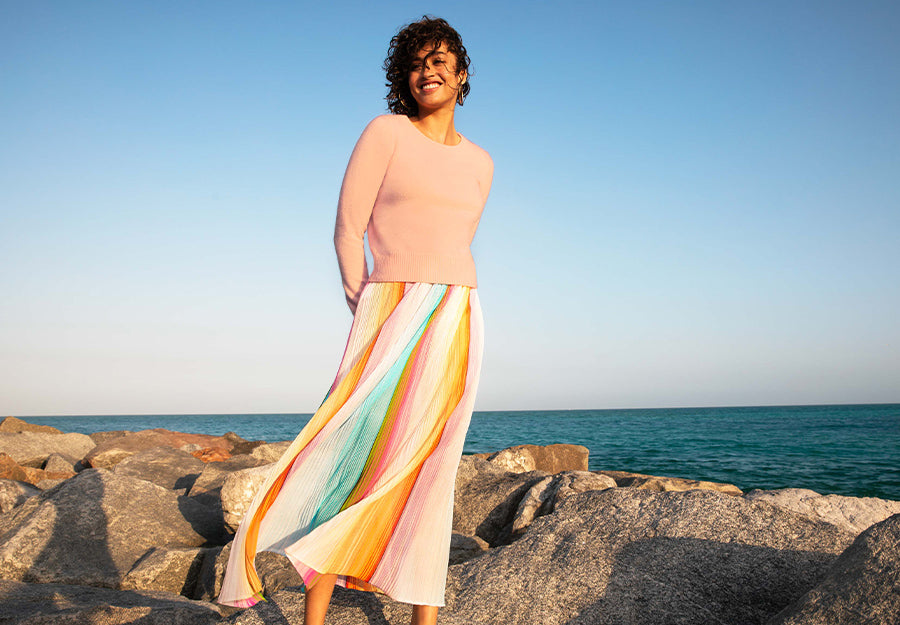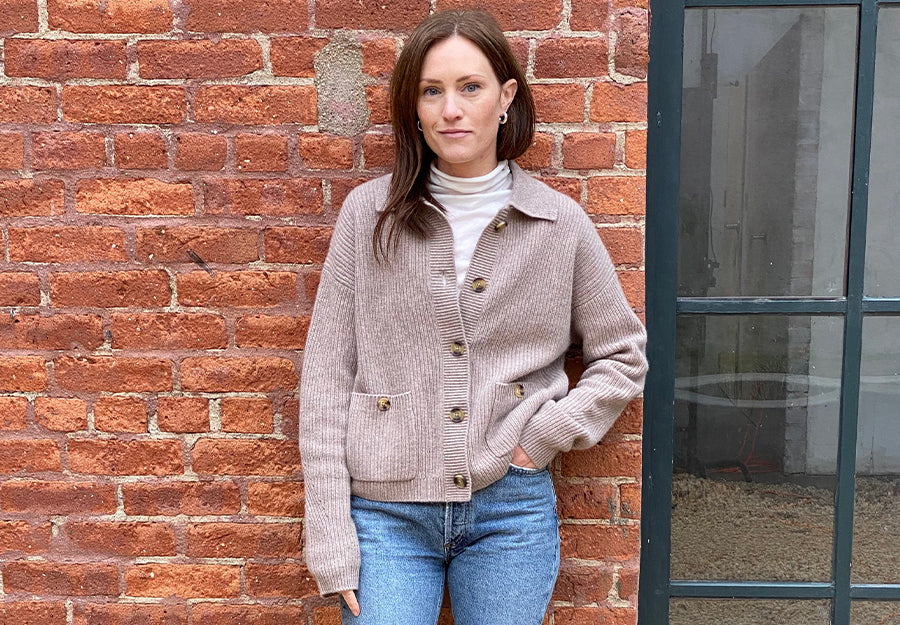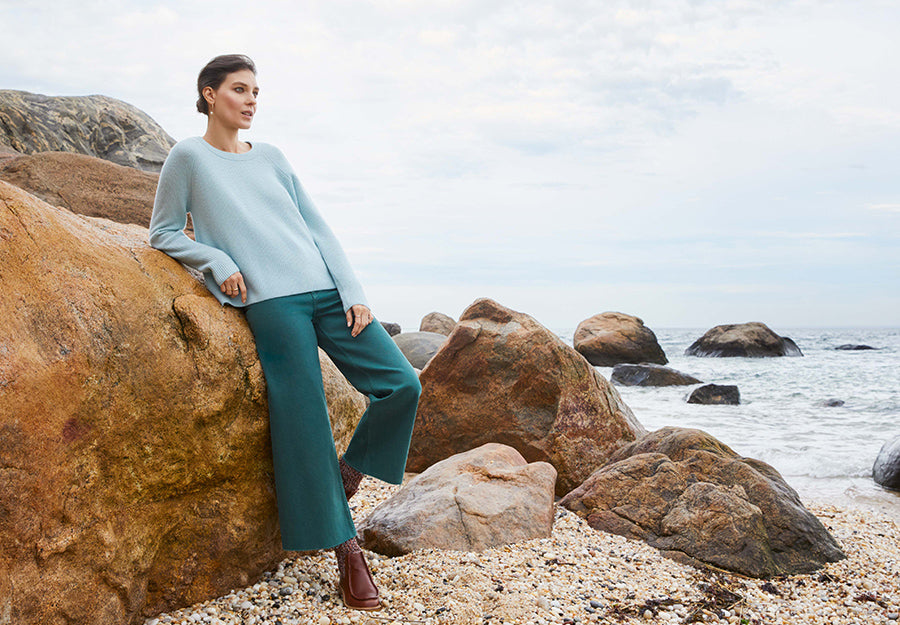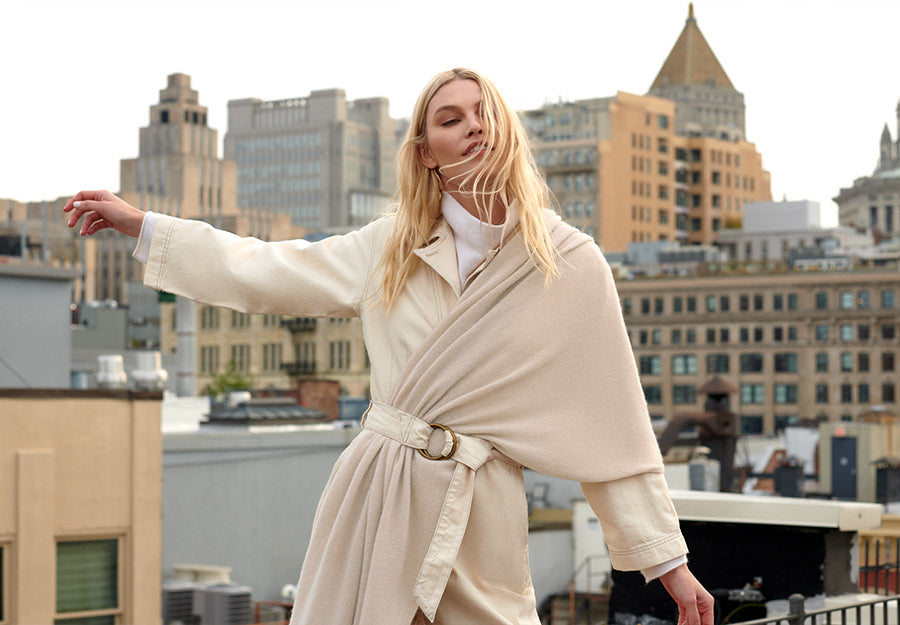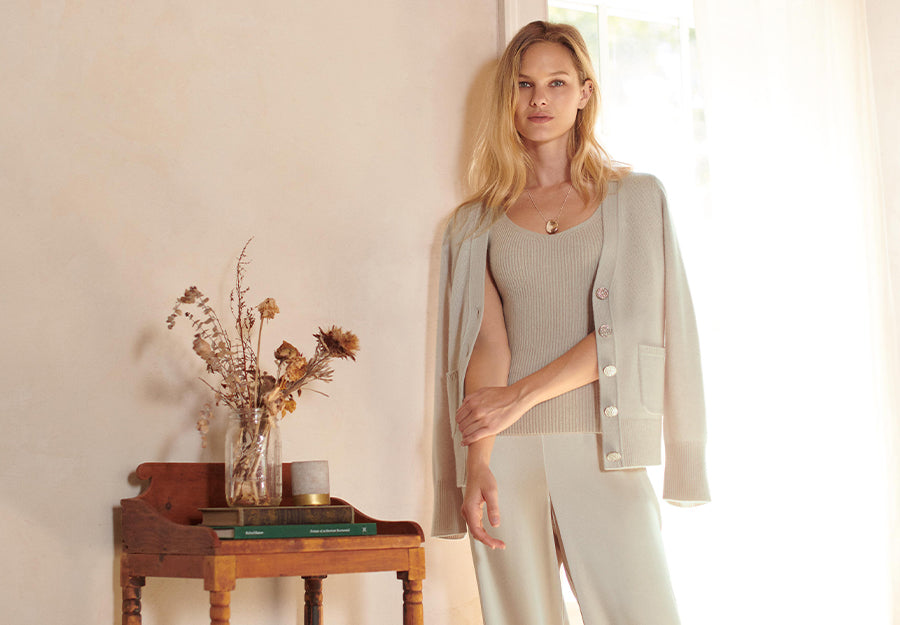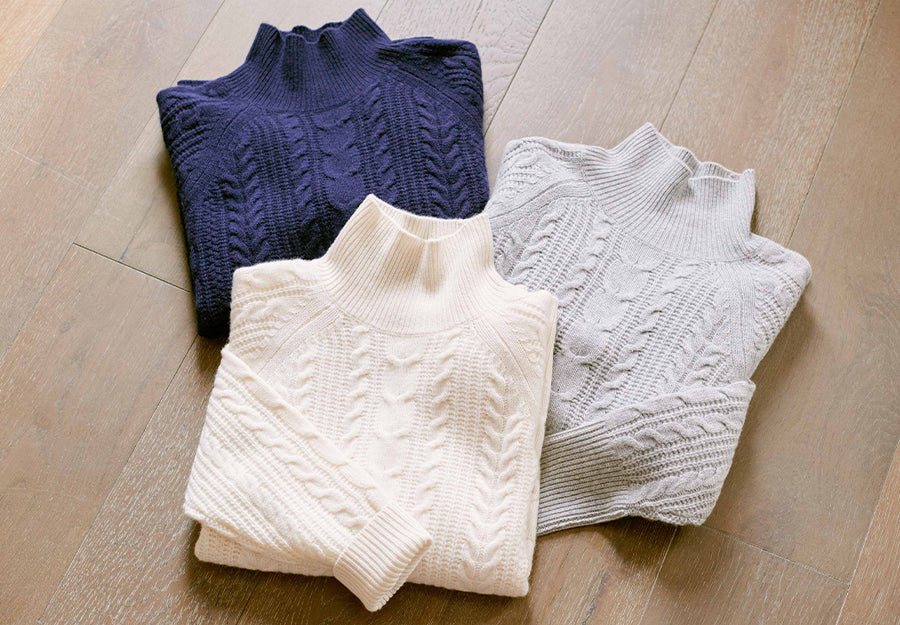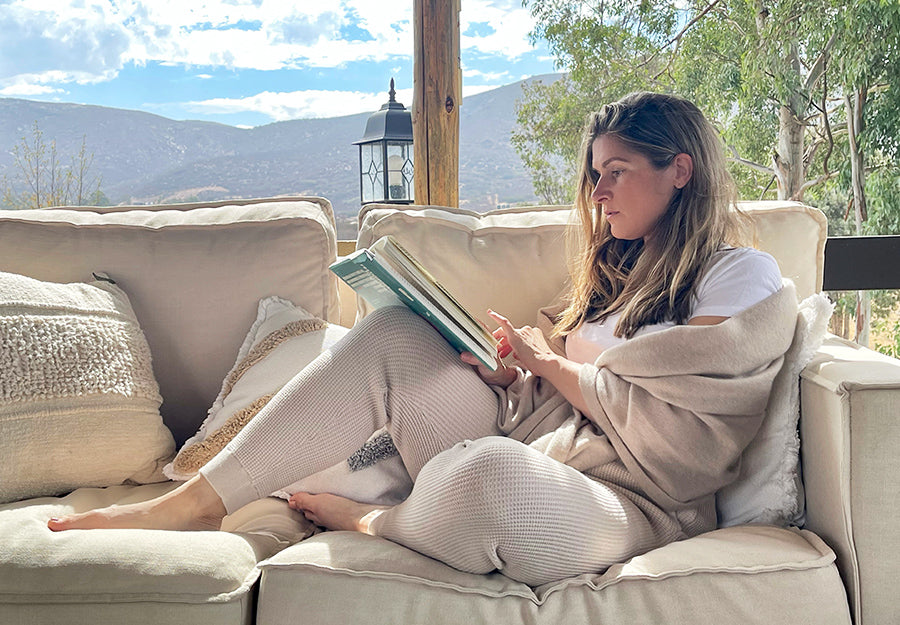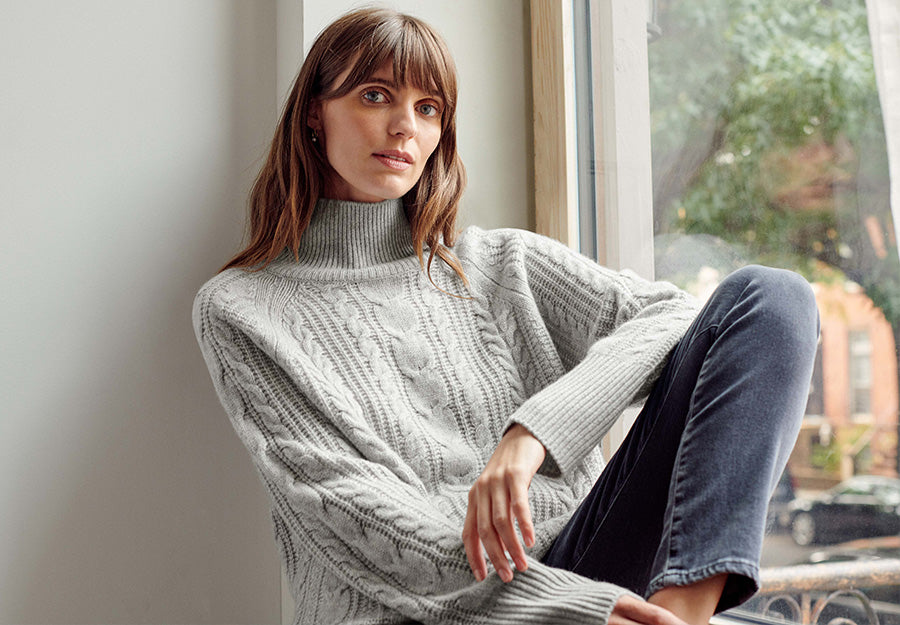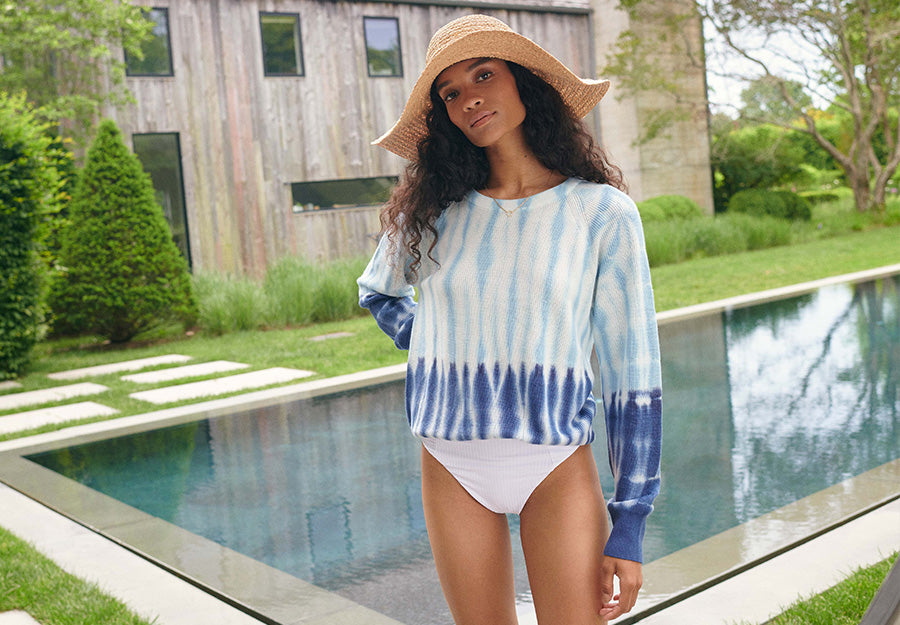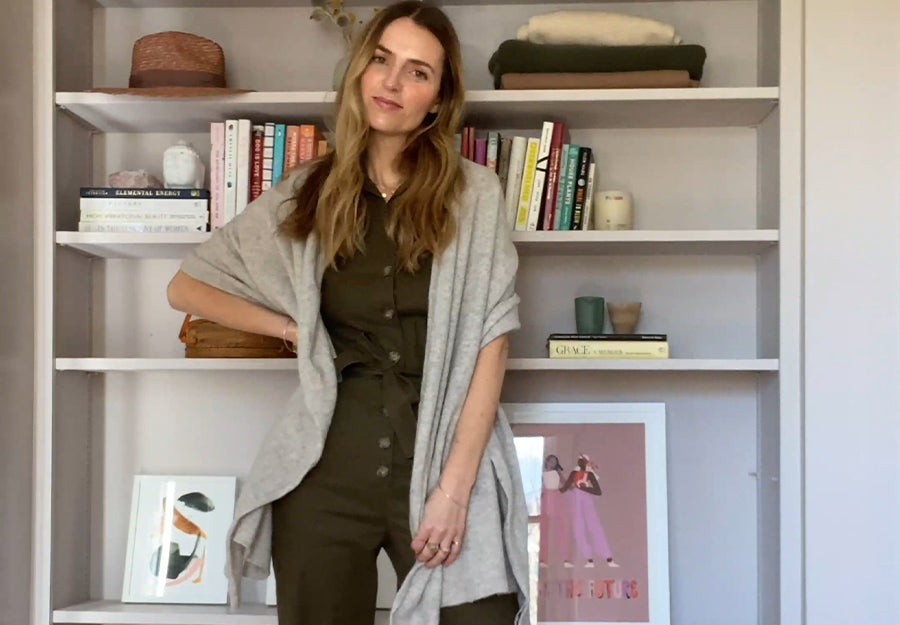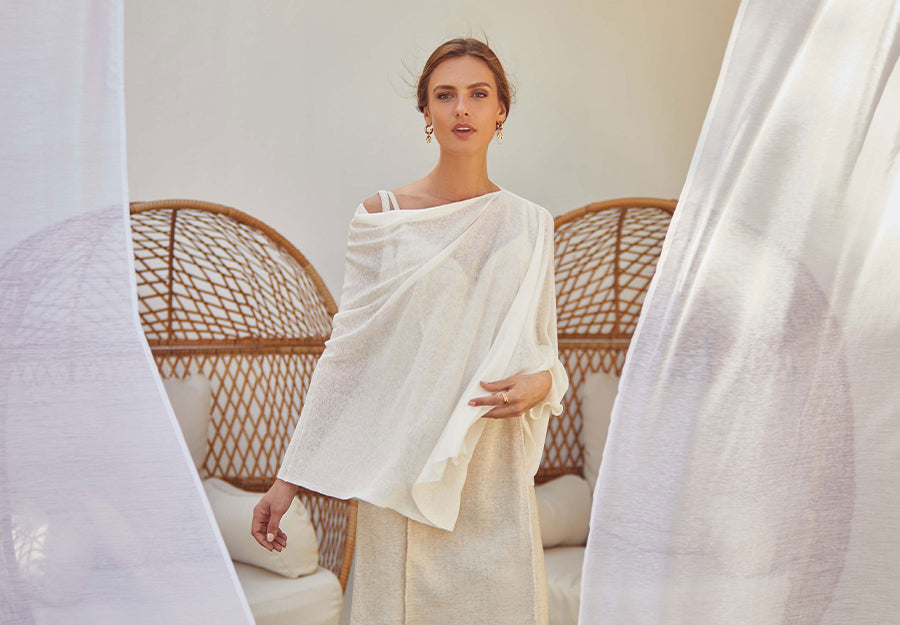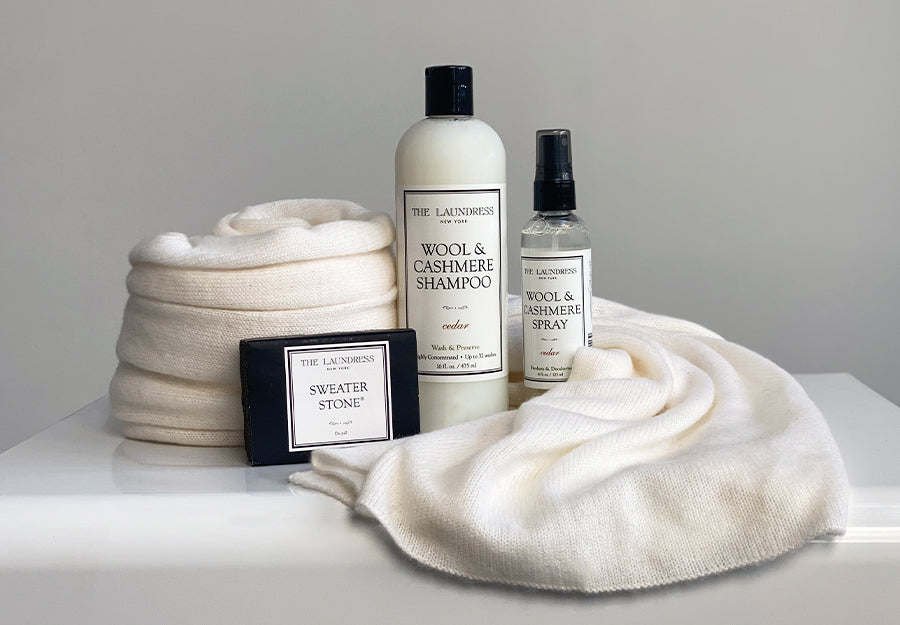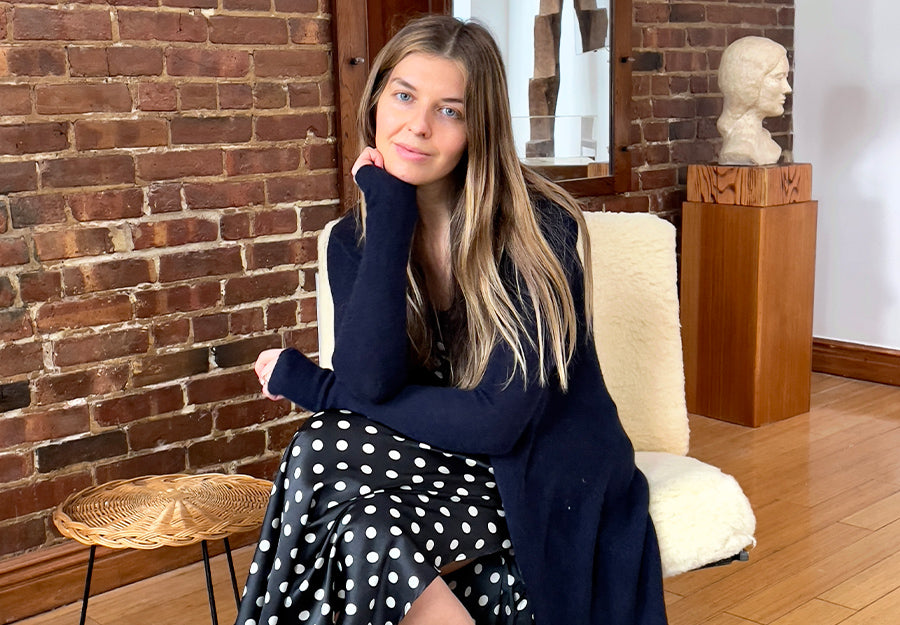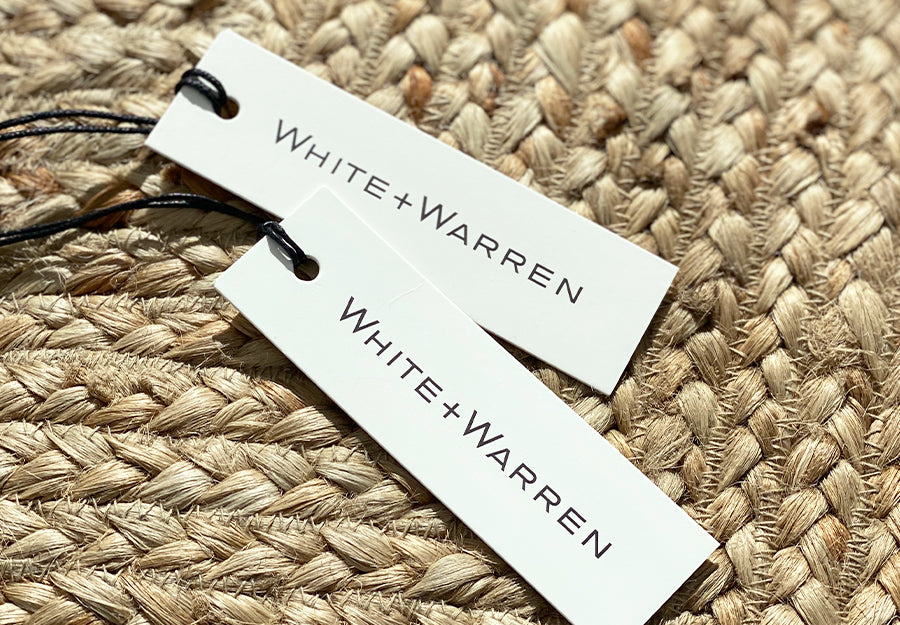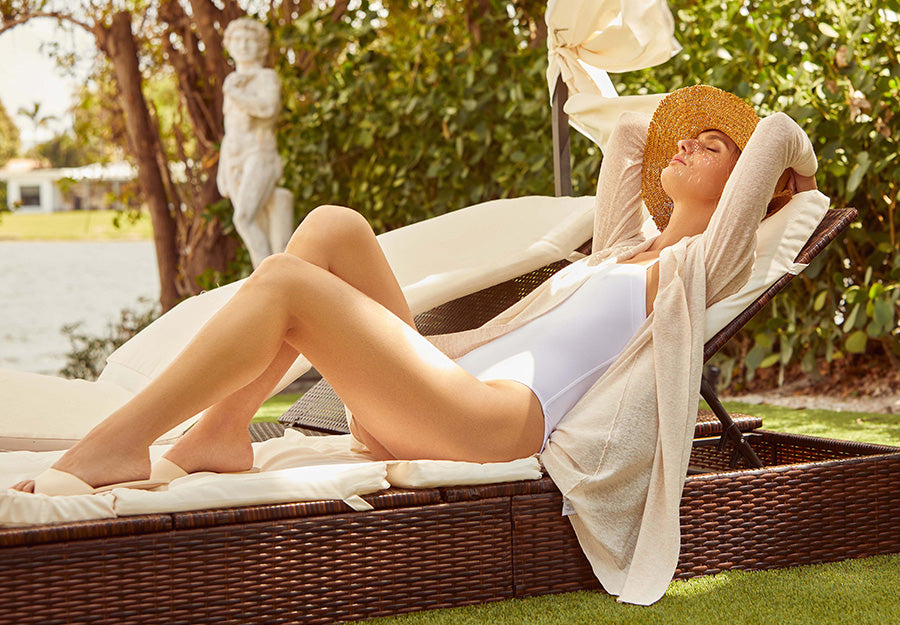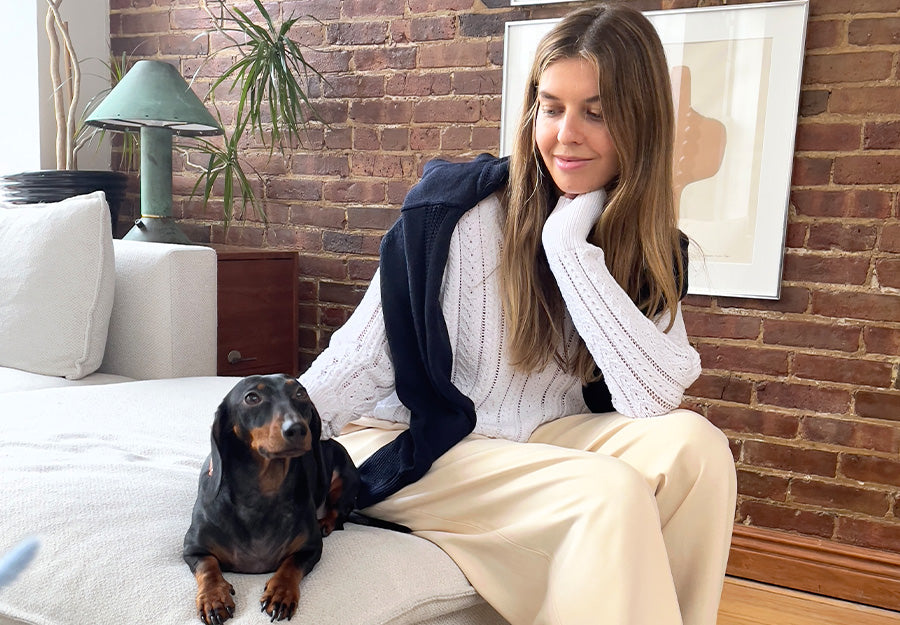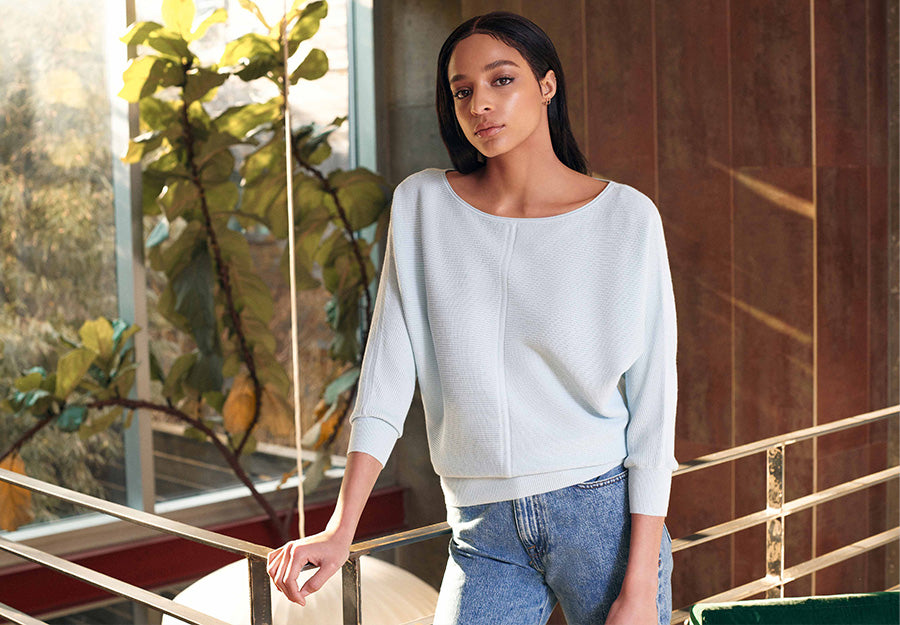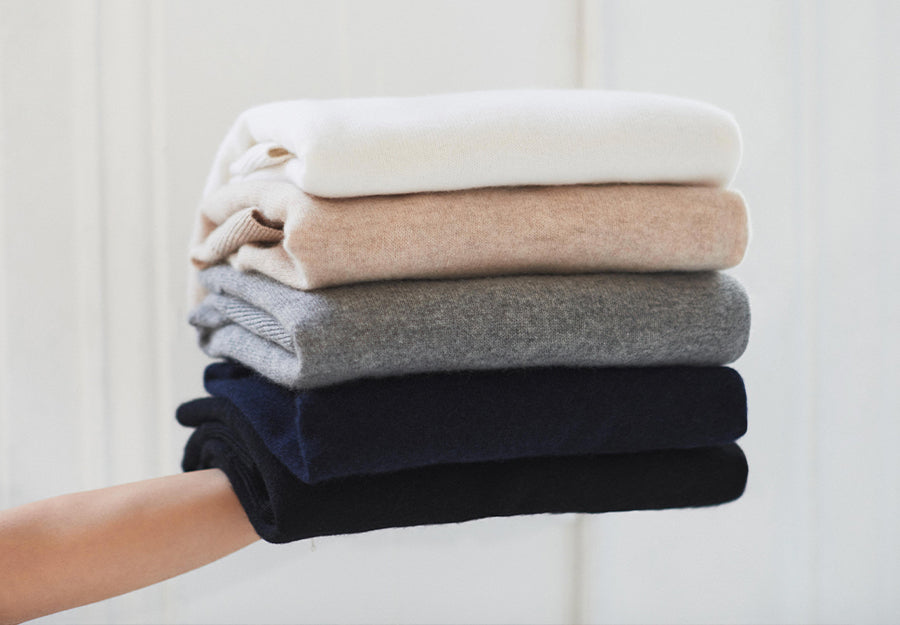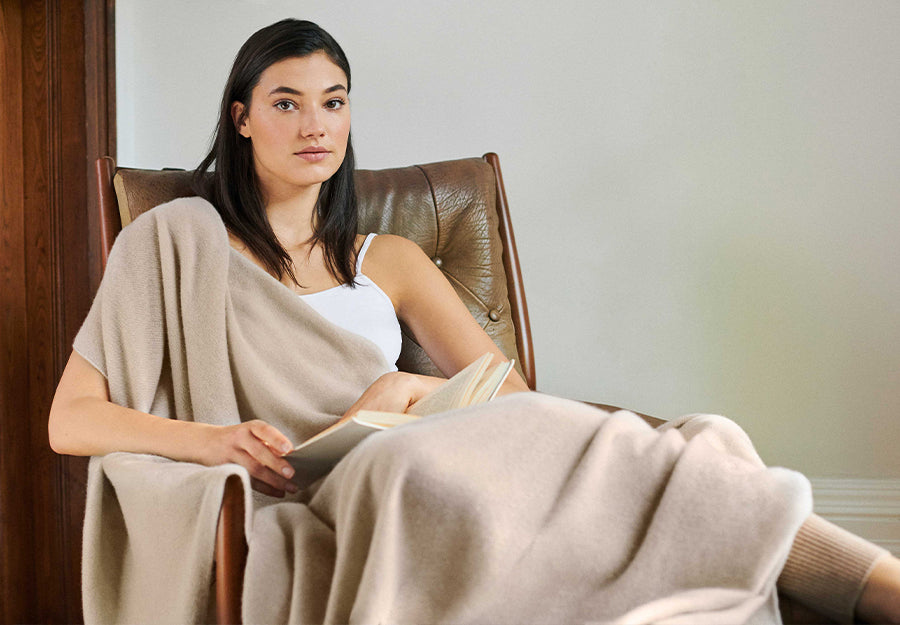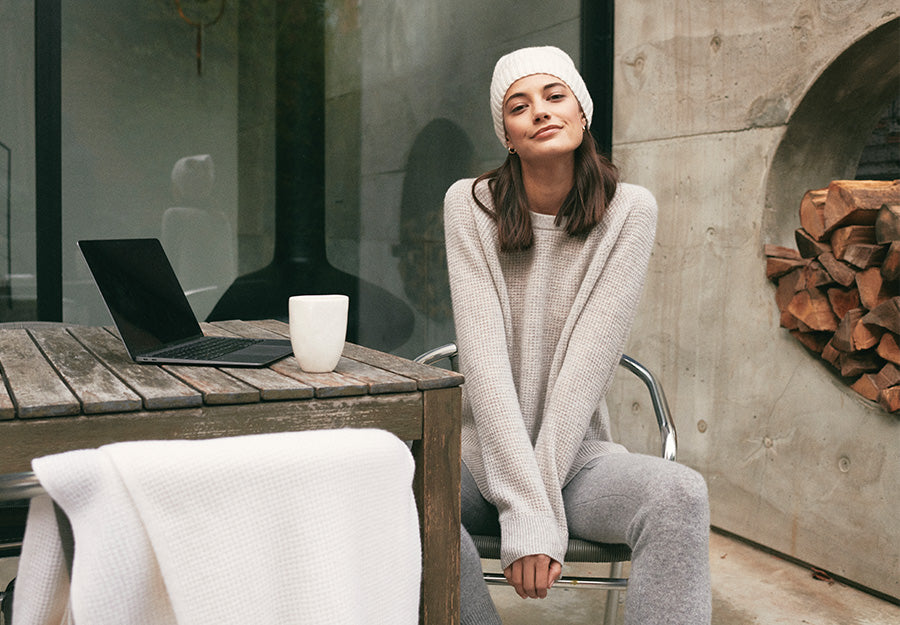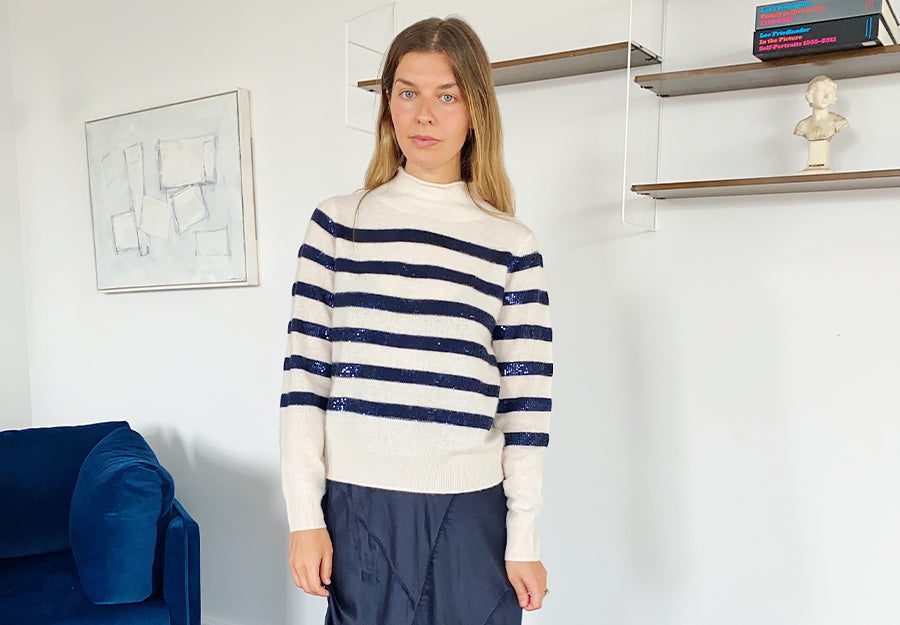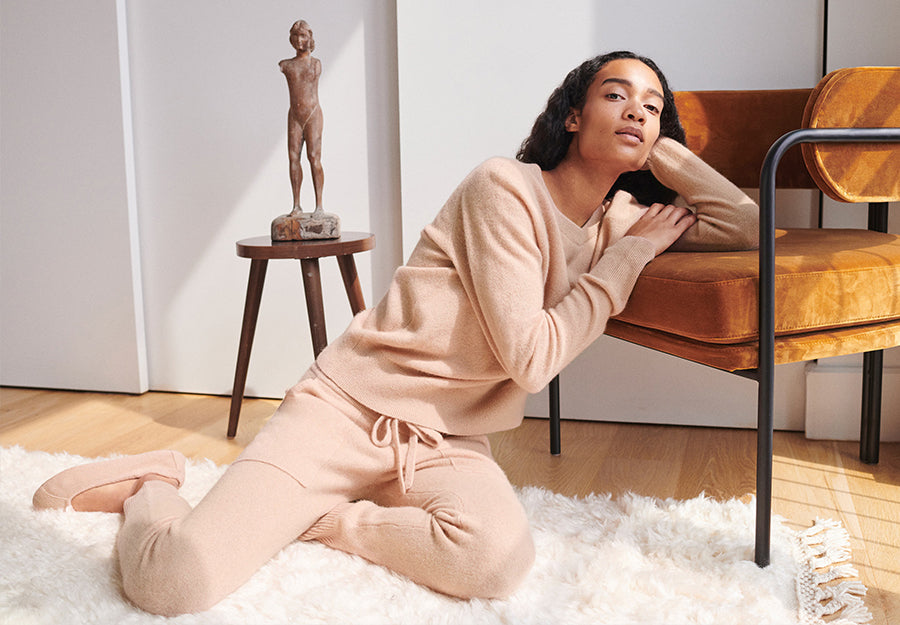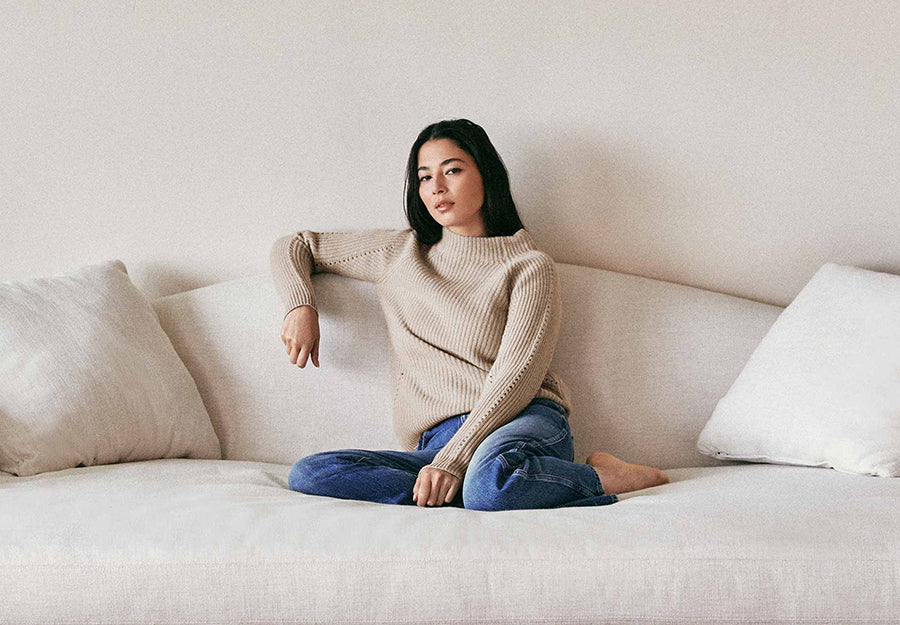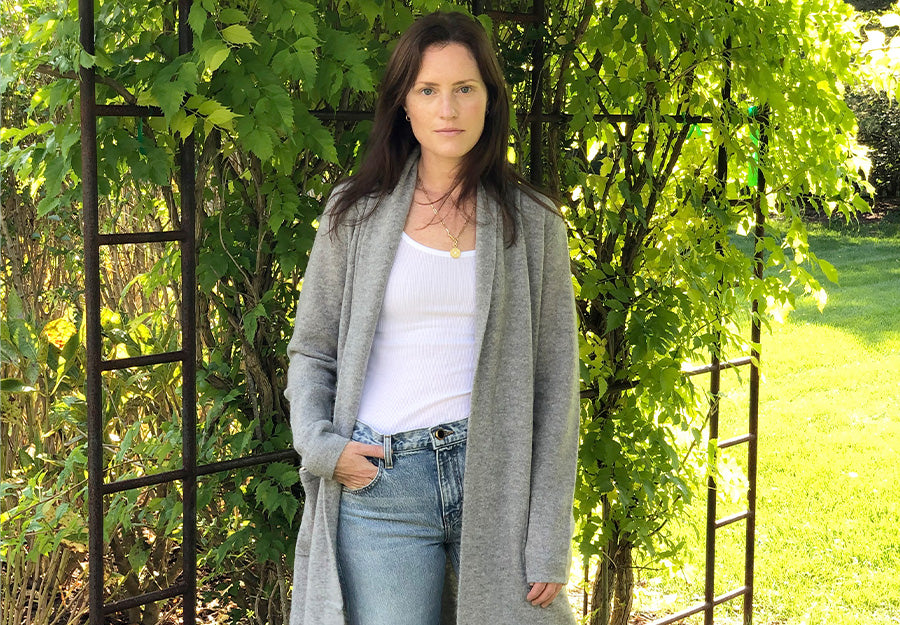April 12, 2024
Embark on the perfect sartorial escape with the Spring 2024 collection.
April 12, 2024
A shortlist of the trends defining the Spring 2024 season.
April 12, 2024
Follow our community around the world as they take you through their travel itineraries in the Cashmere Travel Wrap.
April 11, 2024
We invited three LGBTQIA+ activists to put their pride on display in White + Warren as part of 2022's Pride campaign.
February 01, 2024
our ongoing partnership with the American Heart Association to raise heart health awareness.
January 05, 2024
Immerse yourself in culture and craftsmanship with the Winter 2024 collection.
December 08, 2023
Follow our community around the world as they take you through their travel itineraries in the Cashmere Travel Wrap.
November 21, 2023
Catherine Morrissey threw a stylish breakfast for a fashion crowd at a West Village townhouse.
October 31, 2023
Say hello to our responsibly sourced alpaca wool knits, crafted in partnership with a woman-owned Peruvian factory.
September 07, 2023
Inspired by autumn’s changing hues, we introduce luxury knitwear that reflects the texture, color, and warmth of the new season.
August 01, 2023
All the knitwear styles every chic wardrobe will be craving for the coming fall season.
July 10, 2023
Your complete guide to wearing our favorite knitwear styles, all summer long.
June 22, 2023
Follow our community around the world as they take you through their travel itineraries in the Cashmere Travel Wrap.
June 16, 2023
White + Warren’s Catherine Morrissey and RAMONA’s Jordan Salcito co-hosted a charming dinner to celebrate the launch of White + Warren X RAMONA.
June 13, 2023
Summer hosting tips from the women behind the White + Warren X RAMONA capsule collaboration.
June 12, 2023
The hues of Summer 2023 take you on a colorful journey by the sea.
May 11, 2023
Channel coastal style this summer, and you’ll never steer off course.
April 20, 2023
From golden hour pinks to cabana blues, take a closer look at Spring 2023’s key color trends.
April 17, 2023
Discover White + Warren President Catherine Morrissey’s favorite Spring 2023 picks and how she styles them.
March 24, 2023
The Spring 2023 Lookbook has us dreaming of the Mediterranean.
March 02, 2023
Follow our community around the world as they take you through their travel itineraries in the Cashmere Travel Wrap.
March 02, 2023
In colors and textures drawn from nature, these Pre-Spring looks set the tone for warmer days ahead.
February 14, 2023
DJ Amrit Tietz talks about the importance of heart health and how it’s something to be thankful for and mindful of.
February 10, 2023
The story behind the Essentials Collection, and why these knitwear staples deserve a spot in every woman’s wardrobe.
February 06, 2023
An evening of cocktails, cashmere…and the best winter risotto at the Ned Hotel in NYC.
January 20, 2023
Follow our community around the world as they take you through their travel itineraries in the Cashmere Travel Wrap.
January 20, 2023
The ultimate guide to winter wonderful style.
December 01, 2022
The everyday luxury of cashmere meets Jackyblue's playful artwork with this limited-edition capsule.
November 04, 2022
Your presence? Desired. Your comfort? Required.
October 26, 2022
The Holiday 2022 collection is a luxurious break from the busiest time of year.
October 13, 2022
These new arrivals are all the reason you need to book that long weekend upstate.
October 06, 2022
Follow our community around the world as they take you through their travel itineraries in the Cashmere Travel Wrap.
September 27, 2022
This season’s style checklist, the White + Warren way.
September 16, 2022
The story behind six of White + Warren’s most enduring knitwear designs.
September 09, 2022
Karen Elson, the star of White + Warren’s fall campaign, reflects on confidence, ease and timelessness.
September 08, 2022
An Icon of White + Warren Style
August 23, 2022
Follow our community around the world as they take you through their travel itineraries in the Cashmere Travel Wrap.
August 05, 2022
Welcome a change in seasons with one of our most romantic collections yet.
July 21, 2022
Our love affair with dance and movement is going strong with the season’s knit dressing.
July 08, 2022
Communicate feelings of joy and confidence with styles inspired by the language of flowers and plants.
June 10, 2022
Summer 2022’s expressive palette in fruit and flower shades is an instant shortcut to chic.
June 01, 2022
White + Warren President Catherine Morrissey elevates everyday looks with the season’s most covetable cardigans and shrugs.
May 17, 2022
Follow our community around the world as they take you through their travel itineraries in the Cashmere Travel Wrap.
May 13, 2022
Launching just in time for summer, these new arrivals will inspire you wherever you wander and roam.
May 06, 2022
To celebrate Mother’s Day, jewelry designer Catherine Zadeh and her daughters Sophie, Chloe and Celine talk about their special connection, personal style, and the legacies they’ve inherited.
April 29, 2022
Introducing White + Warren’s definitive guide to celebration dressing, featuring 10 looks for (almost) every occasion.
April 15, 2022
Every day feels like a day at the beach with our latest collection.
March 24, 2022
Consider this the spring getaway wardrobe of your dreams.
January 27, 2022
White + Warren President Catherine Morrissey shows us how to wear Winter 2022’s latest and greatest.
January 07, 2022
From winter-brightening hues to fashion-forward silhouettes, our latest collection presents the perfect opportunity to hit reset on your wardrobe.
December 14, 2021
The Cashmere Travel Wrap delivers chic simplicity and daily ease wherever you choose to go.
October 28, 2021
Our Holiday Collection is a celebration of all the little things that make all the difference.
October 15, 2021
A behind-the-seams look at Fall 2021’s recycled cashmere capsule.
September 09, 2021
Professional jet-setter Joey Lico shares her travel style tips and more.
September 08, 2021
Back to work. Back to school. Back to dressing with purpose.
August 16, 2021
Next stop: Your closet.
June 23, 2021
We have everything you need to celebrate summer and be the best-dressed guest.
June 03, 2021
How to style our most iconic accessory all season long.
April 22, 2021
Hit fresh on your wardrobe with bright white styles for spring.
April 06, 2021
How to easily wash and care for your cashmere at home.
April 02, 2021
A lesson in layering with 5 easy looks that are perfect for spring.
April 02, 2021
Our eco-friendly packaging is made with the planet in mind.
April 01, 2021
Spring has arrived with styles that invite you to soften and breathe.
March 12, 2021
White + Warren stylist Haley Loewenthal answered our team’s most burning questions (and shared fresh outfit inspo along the way).
February 27, 2021
For Spring 2021, unique touches of craftsmanship turn each sweater into a statement.
February 02, 2021
Our vision is guided by our values – focusing on quality, inspiring trust and protecting our planet.
January 21, 2021
At home, on the go, and everywhere in between—our iconic cashmere Travel Wrap will keep you cozy around the clock.
January 08, 2021
Our new waffle cashmere capsule collection is made to gently usher you through the cold days ahead.
November 13, 2020
Haley Loewenthal picks her favorite knits of the season—and offers some expert styling tips along the way.
November 11, 2020
Our new At-Home Shop is your go-to for cashmere loungewear that you will love to live in.
November 09, 2020
Our winter collection was made to stand out while staying warm and toasty, too.
October 28, 2020
White + Warren President Catherine Morrissey took our new loungewear on a weekend getaway with cashmere looks that you can wear at home, on the go, and all points in between.
